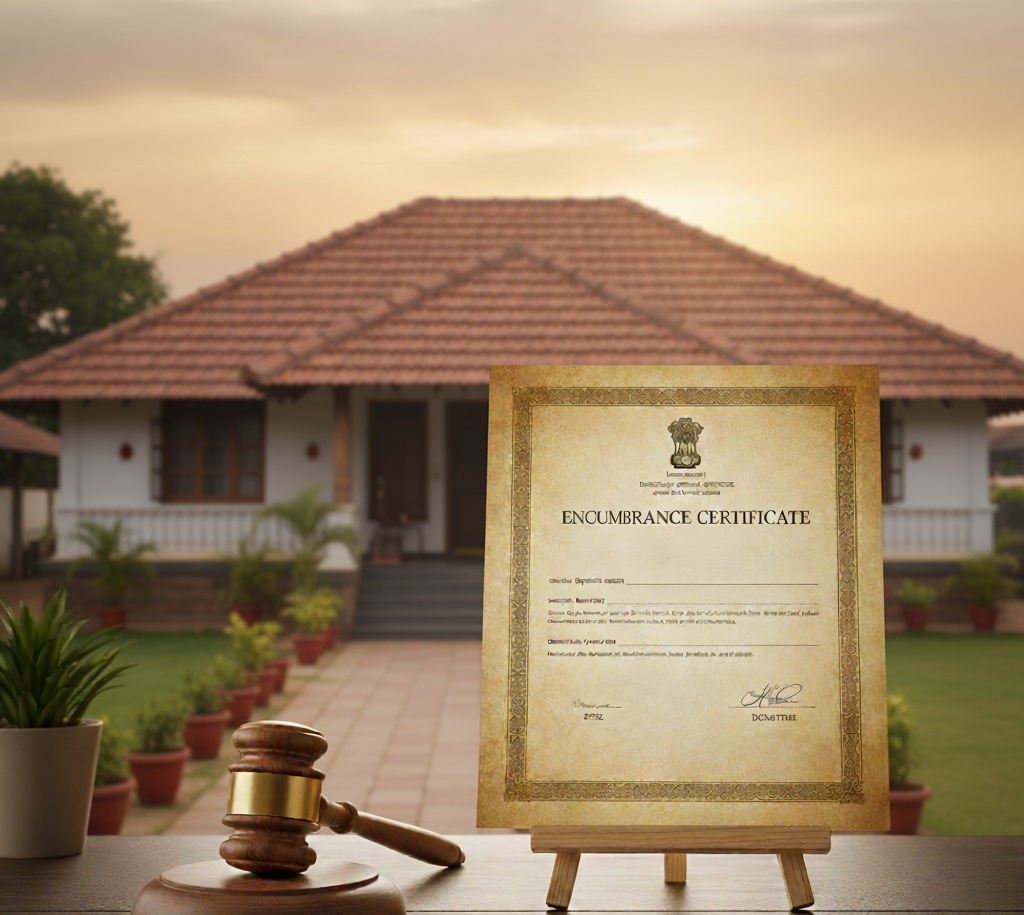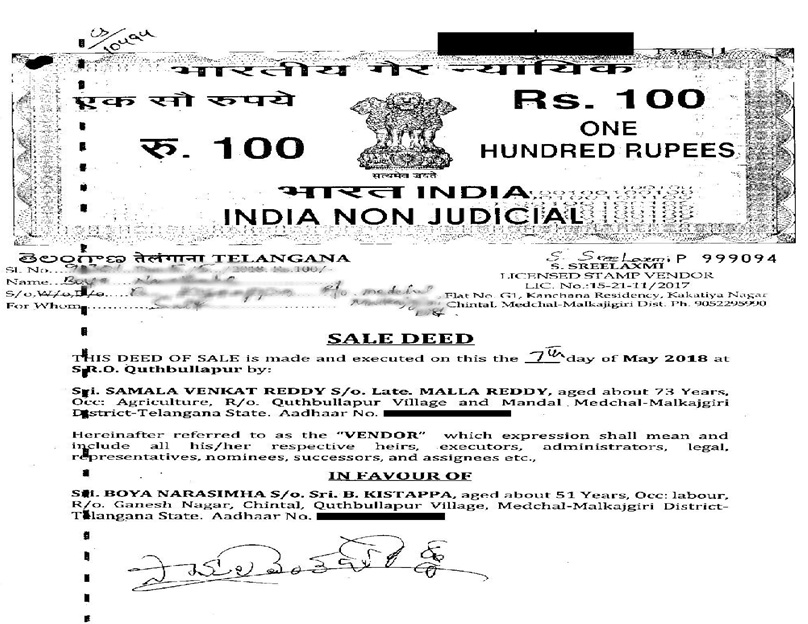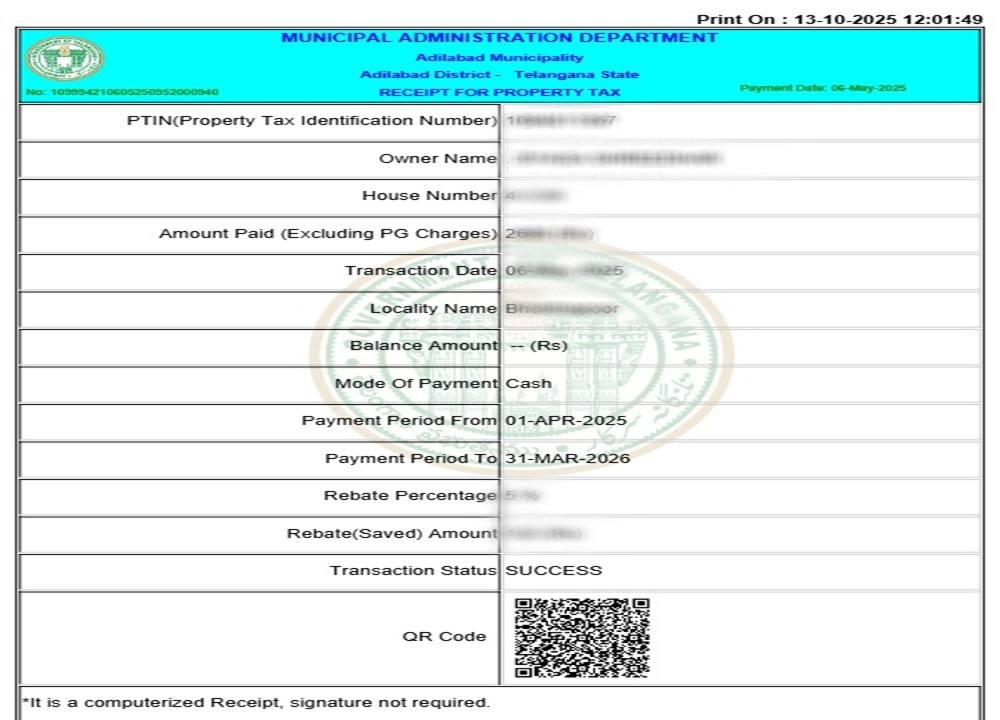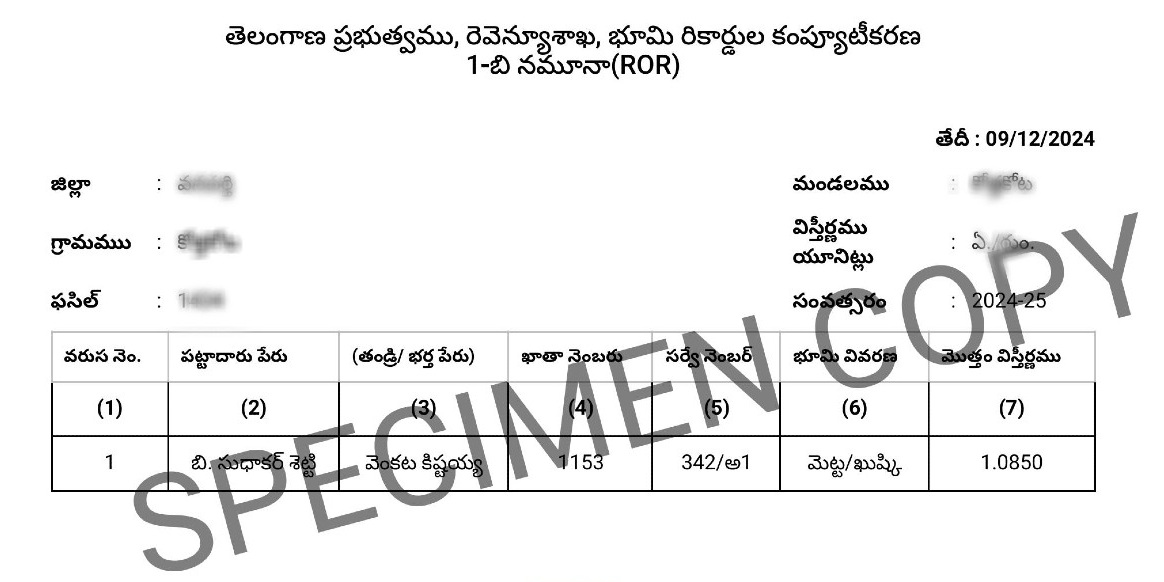An Encumbrance Certificate (EC) is essential for property transactions in Karnataka, providing a clear record of registered property transactions. This document serves as proof that a property is free from legal liabilities, making it crucial for prospective buyers and lenders. Understanding the EC can simplify the property buying process and protect against potential disputes.
Navigating the application process for an Encumbrance Certificate can seem daunting, but it is straightforward with the right knowledge. Online services offer convenience and efficiency, allowing users to obtain their certificates without the need to visit government offices. This digital transformation has enhanced accessibility and streamlined procedures for individuals and professionals alike.
Awareness of the validity, renewal, and usage of Encumbrance Certificates ensures that property transactions are secure and legally sound. Familiarity with best practices can also help mitigate common issues, making the process smoother for everyone involved.
Key Takeaways
- An Encumbrance Certificate proves that a property is free from legal claims.
- The application process can be conveniently completed online in Karnataka.
- Understanding validity and best practices enhances property transaction security.
Legal Framework of Encumbrance Certificates in Karnataka
The legal framework governing Encumbrance Certificates (EC) in Karnataka creates clarity in property ownership and transactions. It provides essential guidelines that ensure the certificate serves its purpose effectively.
Definition and Purpose
An Encumbrance Certificate is a document that certifies whether a property is free from any legal or financial liabilities. It assures potential buyers and lenders that the property title is clear, without any encumbrances like mortgages, liens, or outstanding debts.
The EC is issued by the Sub-Registrar’s office, detailing all transactions related to the property. It includes information such as the nature and details of any encumbrances. The certificate is crucial for property transactions, loan approvals, and legal validations, ensuring transparency and trustworthiness in real estate dealings.
Governing Laws and Regulations
The Encumbrance Certificate is governed by laws articulated in the Indian Registration Act, 1908, and the Karnataka Stamp Act, 1957. These laws provide a framework for the registration of property transactions and mandate the issuance of ECs for properties post-2004.
Under Section 17 of the Registration Act, the registration of documents related to property is made compulsory, while the Karnataka Stamp Act regulates stamp duty on these transactions. The EC must be procured for any property transaction to validate the absence of claims against the property. Non-compliance can result in legal disputes and financial loss.
Applying for an Encumbrance Certificate
Obtaining an Encumbrance Certificate (EC) in Karnataka involves specific eligibility criteria, required documentation, and both online and offline application processes. Understanding the applicable fees is also crucial for applicants. Each aspect plays a significant role in ensuring a smooth application experience.
Eligibility Criteria
To apply for an Encumbrance Certificate, the applicant must be a legal owner of the property in question or have a vested interest. This can include individuals, firms, or organizations who have a legitimate claim over the property.
Additionally, the property must be located in Karnataka and registered with the local sub-registrar. It is essential that the request is made for a property that falls under the jurisdiction of the Department of Stamps and Registration.
Required Documentation
The following documents are typically required when applying for an Encumbrance Certificate:
- Title deed of the property
- Sale agreements, if applicable
- Past Encumbrance Certificates for comparative purposes
- Identification proof (Aadhaar card, voter ID, etc.)
Applicants should ensure that all documents are clear and legible to avoid delays. Any discrepancies can lead to rejection of the application or requests for additional documents.
Online and Offline Application Processes
Applications for an Encumbrance Certificate can be made through both online and offline methods.
Online Process:
- Visit the Kaveri Online Services portal.
- Register as a new user if not already enrolled.
- Fill out the EC Application form, providing required details.
- Upload necessary documents as specified.
- Pay the applicable fees through available online payment options.
- Submit the application.
Offline Process:
- Visit the nearest Sub-Registrar office.
- Obtain and fill the EC application form.
- Submit the form along with the required documents.
- Pay the fee in person at the office.
The online method offers convenience, while the offline route may appeal to those preferring face-to-face interactions.
Fees and Charges
The fees for obtaining an Encumbrance Certificate vary based on the property type and the period for which the certificate is requested.
Typically, the charges can be structured as follows:
- Minimal fee for a single-property EC.
- Additional fees for extending the certificate period.
It is advisable for applicants to check the specific fee structure on the Kaveri Online Services portal or consult the local Sub-Registrar office for the most current information.
Understanding Encumbrance Certificates
Encumbrance certificates play a crucial role in real estate transactions, providing essential information regarding a property’s legal and financial status. This section explores the main components of these certificates and how to interpret the details they contain.
Components of the Certificate
An encumbrance certificate typically includes several key components. Firstly, it states the property details, such as the location, size, and ownership information. This section confirms the title of the property.
Secondly, it discloses any encumbrances on the property, which may include mortgages, liens, or legal claims. Each encumbrance is recorded with its respective dates and details for clarity.
Lastly, the document will specify the validity period of the certificate, indicating the time frame it covers, which is usually structured to provide historical data on the property. This information is vital for buyers and lenders in assessing the property’s legal standing.
Interpreting Encumbrance Details
When interpreting encumbrance details, it is vital to understand the significance of the information presented. Dates linked with each encumbrance reveal the exact timeline of financial and legal obligations. A recent encumbrance may indicate ongoing liabilities that could impact ownership.
Moreover, it’s important to note the distinction between paid and unpaid encumbrances. Paid encumbrances will typically show a release date, whereas unpaid ones may require immediate attention.
Understanding the implications of these details can guide owners and potential buyers in making informed decisions. Therefore, analyzing the encumbrance certificate thoroughly is essential during any property transaction to avoid future complications.
Usage of Encumbrance Certificates
Encumbrance certificates serve multiple functions in property transactions and legal processes. They provide necessary validation regarding a property’s title and any legal claims against it. This section explores their essential roles in various contexts.
Property Transactions
When buying or selling property, an encumbrance certificate is vital. It verifies that the property has a clear title and is free from liens or mortgages. Buyers often request this document to ensure they are not inheriting any undisclosed debts or legal issues associated with the property.
The certificate typically covers a specific period, allowing potential owners to assess the property’s history. Stakeholders can obtain it for different time frames, which helps confirm the authenticity of past transactions.
Furthermore, stakeholders may face challenges during disputes if an encumbrance certificate is not properly verified. A clear encumbrance certificate fosters trust among parties and can expedite the transaction process significantly.
Legal and Financial Reference
In legal disputes, an encumbrance certificate acts as a critical piece of evidence. It confirms the ownership and the absence of claims, providing clarity to courts regarding property rights. This document can be instrumental in cases such as inheritance disputes or misunderstandings regarding property ownership.
Financial institutions also require this certificate before sanctioning loans. Banks need to verify that the property is free from legal complications before approving mortgage applications. Failing to present an encumbrance certificate may lead to delays or loan rejections.
Additionally, this document aids in protecting buyers against any fraudulent claims. Legal professionals often emphasize the importance of obtaining a current encumbrance certificate when dealing with larger financial investments.
Land and Property Verification
An encumbrance certificate significantly enhances the due diligence process in land verification. Buyers and investors rely on this document to confirm that a property’s title is legitimate and holds no undisclosed encumbrances.
Real estate agents and property consultants often incorporate this verification step into their processes. A thorough examination of the encumbrance certificate can illuminate any potential issues that may not be apparent through a simple inspection.
Using technology, the process of obtaining this certificate has become more efficient. Many states, including Karnataka, offer online services that streamline application and delivery, making it easier for individuals to ensure due diligence when considering a property purchase.
Validity and Renewal of Encumbrance Certificates
Encumbrance certificates (EC) serve a crucial role in property transactions, confirming the absence of legal or monetary encumbrances on a property. Understanding the duration of their validity and the renewal procedures is essential for property owners and buyers.
Duration of Validity
In Karnataka, the validity of an Encumbrance Certificate typically extends for a period of 15 years from the date of issuance. This means that any transactions conducted or encumbrances placed on the property during this timeframe are recorded in the certificate.
For properties older than 15 years, a new EC may be required to reflect the current status. Particularly for properties with ongoing transactions, it’s advisable to obtain an updated EC to ensure it accurately represents current encumbrances.
Renewal Procedures
Renewing an Encumbrance Certificate involves a few straightforward steps. The property owner must approach the local Sub-Registrar office where the property is registered.
The required documents generally include:
- Application form for renewal
- Previous encumbrance certificate
- Identification proof of the applicant
Once submitted, the renewal process usually takes 3 to 10 working days, depending on the duration of the property’s history being evaluated. After the renewal, it is prudent to verify and ensure all recent transactions are accurately recorded in the newly issued certificate. This guarantees that the certificate remains a reliable document for future real estate dealings.
Issues and Resolutions
Various issues can arise regarding Encumbrance Certificates in Karnataka, impacting property transactions. Addressing these challenges is essential for ensuring legal clarity and safeguarding property rights. The following subsections outline common discrepancies, dispute resolution mechanisms, and the correction of records related to Encumbrance Certificates.
Common Discrepancies
Discrepancies in Encumbrance Certificates often stem from errors in documentation or misunderstandings during property registration. For instance, details such as the owner’s name, property boundaries, and transaction dates may be incorrectly recorded.
These errors can lead to confusion and potential legal issues in property transactions. It is vital for property owners to regularly verify their Encumbrance Certificate to identify and rectify discrepancies promptly.
Additionally, properties with multiple transactions may have complexities that require thorough examination. Addressing these issues early can prevent complications in future property dealings.
Dispute Resolution Mechanisms
When disputes arise concerning Encumbrance Certificates, Karnataka offers several mechanisms for resolution. Affected parties can initially approach the Sub-Registrar’s office to present their concerns.
If unresolved, they may escalate the matter to the Director of Land Records. The director typically reviews the situation and mediates discussions to facilitate a resolution.
In some cases, parties may opt for legal recourse through civil court. This option provides a formal avenue for addressing disputes, particularly regarding property rights or ownership claims. Utilizing the appropriate mechanism is crucial for a timely resolution.
Correction of Records
Correcting records associated with an Encumbrance Certificate is a critical process. Property owners can file an application with the Sub-Registrar’s office to initiate this correction.
Supporting documents, such as identity proofs and original land titles, are generally required to support the request. The procedure involves meticulous verification by authorities to ensure accuracy.
Once the correction is approved, an updated Encumbrance Certificate is issued, reflecting the corrected details. Timely corrections help maintain the integrity of property records and prevent future disputes. Engaging with local authorities promptly assists in facilitating these corrections effectively.
Certified Copy and Extracts
Certified copies and extracts are essential documents in property transactions, helping to verify ownership and financial commitments associated with real estate. Understanding the procedures to obtain these documents and their authentication will facilitate smoother transactions.
Procedure to Obtain Certified Copies
To obtain a certified copy of a property document in Karnataka, an individual must visit the local Sub-Registrar’s office. The procedure typically involves submitting a request form along with necessary documents.
Required Documents:
- Proof of identity (Aadhar, PAN card, etc.)
- Original property document
- Payment of applicable fees
After submission, the officer verifies the details and processes the request. The timeline for obtaining a certified copy may vary but generally takes a few working days.
Authentication and Usage of Extracts
Extracts refer to summarized or specific information from property documents, often used for quick verification. These extracts must also be authenticated to ensure their credibility.
The process involves the endorsement by the Sub-Registrar’s office. Extracts are particularly useful for banks and financial institutions during loan applications.
Common Uses:
- Verifying property ownership
- Assessing legal liabilities
- Supporting mortgage applications
Failure to authenticate these extracts may lead to issues during property transactions. Thus, obtaining properly authenticated extracts is crucial for any real estate dealings.
Digital Transformation in Record Keeping
Digital transformation has significantly impacted record keeping, streamlining processes and enabling quicker access to vital information. This transformation enhances efficiency and accountability, particularly in the context of property documents like encumbrance certificates.
E-Governance Initiatives
E-governance initiatives in Karnataka have revolutionized access to public records. The state employs digital platforms to facilitate the management of documents, especially for property transactions.
For instance, the Department of Stamps and Registration offers a comprehensive application that allows users to automatically calculate Market Value, Stamp Duty, and Registration Fees. This initiative improves transparency and reduces the chances of errors that can occur with manual processes.
Furthermore, it enables automatic indexing of Encumbrance Certificate (EC) data, enhancing the retrieval of essential documents. Citizens can now access these records conveniently online, making the entire process more efficient.
Online Repository and Access
An online repository for documents in Karnataka ensures that property-related records are readily available. This system allows users to submit requests for Encumbrance Certificates electronically, streamlining the process of obtaining essential information.
The online platform includes features such as scanning of registered documents and generating Encumbrance Certificates in real time. This immediate access facilitates quicker decision-making in property transactions.
Additionally, the digital format minimizes paperwork, helping to reduce clutter and improve data management practices. By maintaining a secure online repository, the government enhances the protection of sensitive information while providing efficient public access to necessary documentation.
Best Practices for Individuals and Professionals
Maintaining an Encumbrance Certificate in Karnataka requires diligence and awareness. Individuals and professionals should prioritize regular updates and engage with authorized service providers for optimal outcomes.
Regular Updates and Monitoring
It is essential for individuals to regularly update their Encumbrance Certificate. When a property is sold, bought, or otherwise transferred, the certificate should reflect these changes promptly.
He or she should monitor property records routinely to ensure accuracy. Any discrepancies can lead to legal complications or affect property transactions. Setting reminders for periodic checks can help keep this task manageable.
For properties acquired over time, an individual must obtain an updated certificate reflecting all encumbrances accurately. Engaging with local sub-registrar offices can facilitate this process smoothly, ensuring that the document remains valid and current.
Engaging with Authorized Service Providers
Partnering with authorized service providers is crucial in obtaining and managing Encumbrance Certificates. These professionals possess the expertise needed to navigate the complexities of property registration and documentation.
Individuals should verify the credentials of service providers before engaging them. Reliable providers ensure compliance with legal requirements and offer updated information on procedures and timelines.
Utilizing their knowledge can lead to efficient service delivery, saving time and effort. It is advisable to consult with these experts when facing challenges related to encumbrance records. This collaboration ensures accurate representation of property status, ultimately protecting ownership rights.
Frequently Asked Questions
This section addresses common queries regarding the Encumbrance Certificate process in Karnataka. It covers application procedures, fees, downloading options, and specific formats available for citizens.
How can one apply for an Encumbrance Certificate online in Karnataka?
To apply for an Encumbrance Certificate online, one must visit the Kaveri online services portal. New users need to register on the portal, while existing users can log in and follow the steps to submit their application electronically.
What are the fees associated with obtaining an Encumbrance Certificate in Karnataka?
The fees for obtaining an Encumbrance Certificate in Karnataka may vary based on property value and the type of certificate requested. Generally, applicants can expect a nominal fee, which is specified on the Kaveri online services portal during the application process.
Can I download the Encumbrance Certificate for a property in Karnataka online?
Yes, once the Encumbrance Certificate is issued, it can be downloaded online from the Kaveri portal. Users should log in and access their application to find and download the certificate in a digital format.
What is the procedure to check the status of an Encumbrance Certificate application in Karnataka?
To check the status of an Encumbrance Certificate application, users can visit the Kaveri online services portal. By entering their application number or relevant details, they can verify the current status of their application.
In what format can I obtain an Encumbrance Certificate in Karnataka, and is it available in PDF?
The Encumbrance Certificate in Karnataka is typically available in PDF format. After download, users can save or print the document for their records, ensuring it meets official requirements.
How can I get an Encumbrance Certificate in Kannada for a property located in Bangalore?
To obtain an Encumbrance Certificate in Kannada, applicants can request the certificate through the Kaveri online services portal. They should select the option for language preference during the application process to receive the document in Kannada.



